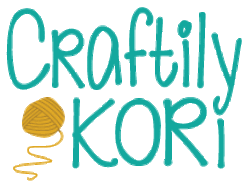Over the last two years, my husband and I have been renovating our house and have kept the color scheme to grays and whites for the majority of the rooms. Calm and cool, yes, but I live for a pop of color. I found some electric blue barstools on Amazon and inspiration hit. Project: Knitted Throw Pillows was underway.
I really like the shape of our current pillows and my husband has settled into a nightly routine of arranging them a specific way (read: manly-pillow fort), so I decided to base the pattern around the same pillow forms and just reuse them (upcycle?). As most of my projects begin, I headed to the local JoAnn store to gather up the fixin’s.
My trip to the store was a success:
Blue chunky yarn – Check
Matching blue zippers – Check
Snazzy fabric for the backside – Check
Used a coupon – Check!
Now, for the most important question…what stitch should this pillow be?
I discovered a herringbone stitch technique while working on another project and just fell in love. I’ve been really wanting to use it again and thought of it for this pillow. Also, this type of knit stitch comes highly recommended for cushions and pillows since it creates such a tight fabric. Sounds like a winner.
Admittedly, it took a few times to figure out the gauge and how many stitches to cast on. I first used size US 15 straight needles (14 inches long) and came up short. I switched over to circular needs and had a better result with 58 CO. Even then, I made the fabric a little bigger than needed so the pattern could use even more adjusting.
Now, the fun part! Sewing the pillow.
So fun, in fact, that eight months went by before I got to this step. Eh, life happens, right?
I washed and finished the edges of the many, many yards of fabric using a serger (I have no idea why I bought that much, remember it had been eight months…) and then ironed it all. To fit the existing pillow form, I needed two pieces of fabric – one 15″ tall x 19″ long and one 15″ x 20″ (extra for the zipper). I always forget how to do zippers, so I dusted off my trusty Stitch by Stitch book by Deborah Moebes for a quick refresh. Then, pinned both fabric sides to the knitted fabric. Even though I had extra yarn hanging out, I was happy that the addition of a garter stitch border seemed, in concept, to work out well.
Okay, okay, this part really was the exciting step. I was finally able to use my Juki industrial sewing machine! I had bought this off of a woman who owned a leather saddle business almost eight years ago to make seat belt purses. I still haven’t finished those WIP, but I will get there…(are you catching on to my too-many-projects-at-one-time problem).
What! Scissors…cutting….knitted yarn….??? Yes!
It’s a technique that I had stumbled upon a while back, known as steeking. It is traditionally used as a shortcut for knitting garments in the round and then adding an opening afterwards (think cardigan sweater). I’m still a little nervous when I go to actually wash the pillow cover, but I made sure to use two passes of the Juki and think it will stay for quite a while.
And there you have it. Or, well, I have it actually. A blue knitted throw pillow to match the barstools! I almost gave up a few months ago and bought store pillows, but I am really happy I finally finished it.
What’s next? Three more pillows, of course. I am going to use a different stitch for each pillow just to add some variety but will keep the same yarn and fabric.
I’m thinking the cluster stitch will be my next pillow attempted, stay tuned!
Happy Crafting!
~Kori

























































































